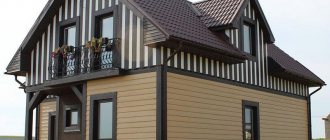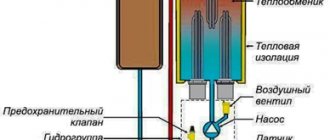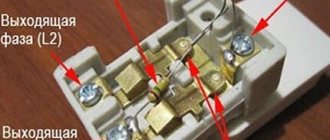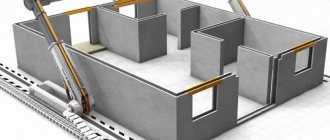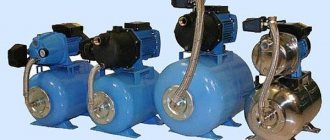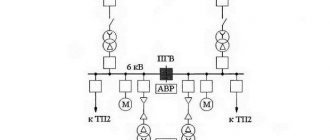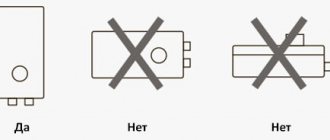Change No. 1: is it possible to arrange an offline connection, bypassing SNT?
Summer residents now have the opportunity to connect to power grids directly by concluding a separate agreement with the power company.
This will allow you not to depend on other members of the SNT and not to undertake obligations to pay the debts of defaulters. In order to create an offline connection, you must:
- find out the name of the electricity supplier for the territory of a particular SNT and submit an application to them for concluding an individual electricity supply contract;
- Attach to the application confirmation of membership in SNT (certificate or gardener's book), as well as documents on the technological connection of SNT to the power grid;
- contact the network organization with a request to install an electric meter.
The Ministry of Energy reminds that from 2022, at the request of consumers, network operators are required to install individual electricity meters (letter of the Ministry of Energy of the Russian Federation No. 09-409 dated 02/05/2021).
The ConsultantPlus system contains a form for the minutes of a meeting of the SNT board on concluding an agreement with organizations supplying heat and electricity, water, gas, drainage, landscaping and protection of gardening areas... Get free trial access to K+ and proceed to the document.
Why are “three phases” needed?
This is a really good question.
Generally speaking, not that many electricity consumers that can be used in a private home require a voltage of 380V.
If you don’t get into all sorts of exotic things, then this list might look like this:
- electric heating boiler power from (approximately) 9 kW and above
- deep well water pump
- electric sauna stove with a power of (approximately) 5 kW
- semi-professional equipment for the workshop (lathe or milling machine, good circular saw)
In principle, all of the above can be found in the 220V version. However, 380V will be better - more powerful, simpler, more reliable, more economical.
So, if you are not planning any of the above in your house, then, apparently, you do not need 380V.
Well, if you still decide to choose three phases based on considerations in case it comes in handy in the future, then it is worth keeping in mind one important circumstance - the power supplied to the house is divided evenly between the three phases. And if one of the phases is overloaded relative to the others, a phenomenon called “phase imbalance” occurs. The consequence may be the failure of electrical appliances connected to the home network
To avoid this, it is necessary to load each phase evenly
The consequence may be the failure of electrical appliances connected to the home network. To avoid this, it is necessary to load each phase evenly.
To make it clearer, consider the 380V connection diagram.
The input here is a common machine for all three phases. Next, two wires – one of the phases and “zero” – go to groups of consumers approximately equal in total power. A consumer that needs three-phase power (in this case, an electric heater in a sauna) is connected to a cable with four wires.
So, if we assume that 15 kW of power is allocated to the house, then it turns out that the power of each of the consumer groups connected through the “phase” plus “zero” pair of the above circuit should be no more than 5 kW. Or even less, if you take into account the presence of a “three-phase” consumer. Otherwise, if one of the phases is overloaded, the input circuit breaker will “knock out” and the electricity will be turned off in the entire house.
Accordingly, having installed three-phase electricity into the house, you will then need to think about how to properly route the cable so that the load on each phase is approximately the same.
The unpleasant circumstance here is that some consumers, for example, a good electric hob or oven, have a power of more than 5 kW. In this case, you need to choose equipment that can be connected to a three-phase line. You will have to run a separate line with a separate machine. And these are additional costs.
Here the question arises: is all this necessary? Maybe it would be easier to limit yourself to 220V?
However, as usual in such cases, you can find positive aspects. If you think through the wiring so that each line has no more than 5 kW, this will improve the electrical safety of the house. Less power on each of the “branches” means less current, less wear on wires and contacts. In general, there is something to think about.
Change No. 2: The time frame for connecting houses to power grids has been reduced
Another change was a significant reduction in the time it takes to connect citizens’ homes to power grids. If previously the connection period was up to four months, now it has been reduced to 30 working days.
This norm is enshrined in Decree of the Government of the Russian Federation No. 639 dated April 26, 2021.
However, in order to benefit from the reduced period, the following conditions must be met simultaneously:
- voltage class of electrical networks is not more than 0.4 kV;
- the distance from the networks to the boundaries of the site is no more than 15 m;
- there are no objections from the owners of neighboring plots that are located between the power lines and the applicant’s plot;
- The network organization is not required to carry out work on the construction or reconstruction of electrical networks.
Single-phase and three-phase connection
There are many technical differences between single- and three-phase connections. For example, a three-phase connection is made using four or five wires. Of these, three are phase, through which current is supplied, and the remaining two are the neutral wire and grounding. In some cases, one common wire is used for neutral and ground.
When connecting using a single-phase circuit, two or three wires are used. This corresponds to phase zero and grounding. Using two wires means that neutral and ground are on a single conductor. Knowing the number of phases in advance, you can make calculations of the permissible power and determine the amount of electrical equipment that can be simultaneously connected to the network on each line.
In the case of a single-phase connection, all the supplied voltage is concentrated on one line, which often leads to overloads. The thickness of the wires on the internal lines of a home network is much higher than those used in a three-phase circuit. This is due to the higher load that falls on only one line. Taking into account all of the above factors, when installing power supply for a private home, preference is most often given to three phases.
Change No. 3: The list of grounds for connecting to a preferential tariff has been expanded
We remind you that there is currently a reduced tariff for connecting to electrical networks - only 550 rubles. (Clause 17 of the Decree of the Government of the Russian Federation No. 861 of December 27, 2004).
In order to take advantage of the discounted rate, the following conditions must be met:
- device power consumption - no more than 15 kW;
- the distance to power lines with a voltage level of up to 20 kW is no more than 300 m (in the city) or 500 m (in the village).
From March 2022, owners of generators with a capacity of up to 15 kW can connect at a reduced rate (RF Government Decree No. 299 of 03/02/2021).
Owners of such generators submit an electronic application to the supplier and enter into an electricity purchase and sale agreement with him. The energy generated by the generator will be counted using a special bidirectional meter and will be included in mutual settlements. Please note that income from the sale by an individual of such electricity is exempt from personal income tax (clause 28.1 of article 217 of the Tax Code of the Russian Federation).
Input methods
There are two options for connecting to a power line: underground and overhead methods. They have their own advantages, disadvantages and installation features.
Let's look at the correct schemes for underground and overhead electricity input.
Results
Owners of garden plots can now enter into an autonomous power supply agreement, bypassing SNT. The time it takes to connect houses to power grids has also been reduced. Owners of autonomous low-power generators can sell the generated energy to the electricity supplier, the payment will be offset against the payment for consumption from the networks.
Find out more about the procedure for taxing income with personal income tax in our “Personal Income Tax” section.
You can find more complete information on the topic in ConsultantPlus. Free trial access to the system for 2 days.
Electrician's recommendations
You should adhere to the basic rules when working:
- horizontal transitions from the junction box to the sockets or switch are laid at a height of 2.5 m;
- the insertion of veins is carried out only vertically or horizontally;
- connection points should only be located in mounting boxes;
- for underground cable laying, you need to use only a single piece with a strong armor tape;
- The biggest mistake is installing the switch in the zero gap;
- It is forbidden to install electrical wires near a wooden surface, but if this is unavoidable, then an insulating hose or gasket made of asbestos and steel with a thickness of 0.2 - 0.5 mm is used.
Single-line power supply diagram for a private house
When developing the power supply for private houses, a single-line diagram is most often used as the most optimal option. It allows for simple design and installation, even in-house. The single-line diagram has proven itself to be effective and easy to use. At its core, it is a highly simplified circuit diagram, where all types of connections and network laying are made with one line of the same thickness. This is where the name single-line diagram came from.
There are two options for single-line diagrams - calculation and executive. The first option is used in the process of building a house. This diagram determines the procedure for installing cable lines at a specific facility and the selection of protective equipment. Calculations of all power loads on this network are preliminarily performed. The calculated single-line diagram indicates all available powers and their values. The location of the ASU must be noted and electrical panels must be marked.
The executive diagram is carried out for existing electrical installations when the house has already been built. By this time, the results of a building survey have already been received from the design organization to prepare the most suitable location of all elements and power supply devices.
{SOURCE}
Electrical panel assembly
The input switch and meter are sealed by power grid workers, so they are located at the beginning of the switchboard so as to provide this opportunity.
Step by step assembly:
- fastening of automatic devices and RCDs on the rail according to the drawn up diagram;
- connecting elements to the input switch using a comb;
- connecting phase wires with wires with lugs;
- installation and connection of the zero bus;
- checking (tightening) joints with a screwdriver;
- turning on the power, checking the operation of the machines;
- determining network parameters using a multimeter.
Before starting to operate the 380V network, make sure that all elements of the internal system (sockets, sockets, switches) are installed and connected.
Specifics of using SIP
Using a wire in an overhead line
You can install a SIP cable on a support or facade, making branches and other connections. When working with wire you must:
- pre-install the VLI supports by securing the clamps to them;
- roll out by installing rollers using a special belt or hooks. The wire is pulled to the outer supports with a drum. They work manually with a cable leader;
- secure the electrical conductor to the supports. The load-bearing core is fixed with an anchor clamp;
- tension the cable using a hand winch with a grip amplifier;
- select a 2-wire SIP-4 for a single-phase network, and a 4-wire SIP-4 for a three-phase network.
The tension must be done smoothly, without distortions, until the head of the torque wrench breaks.
Installation cost
Installing electrical wiring is an important issue. A correctly drawn up house wiring plan is a guarantee of safety. If a person has never encountered such a problem in his practice, then it is better to seek help from trusted specialists.
To do this, you should familiarize yourself with the approximate prices for this type of service:
Initially, you should be prepared for the fact that installing electrical wiring in a house will cost much more than in an apartment.
How to supply electricity to a distribution panel
When using an ordinary conductor, it is enough to simply connect it to the main circuit breaker, from which the electricity will then go to other consumers. But when using an SIP or an insulated conductor, you should install a switching unit - a separate place for the transition of the input cable to the one that will be routed to the panel.
It is most convenient to use a branch clamp for this - 2 copper plates, fastened to each other with four bolts and placed in a special plastic box.
Why do apartments have 220 and not 380 volts with 3 phases?
We hope our information does not shock you too much. The fact is that there is no 380 volt input, which means there is no question of how to connect it either.
You didn't believe it? Then let’s explain - there is a 4-wire input (3-phase) and there is a single-phase input (2-wire). But! By providing a 380 volt and 3 phase connection in a private home. What will you get? That's right - three independent pairs of 220V each. Confused?
Let's get some physics of electricity. We are not claiming a Nobel Prize, we will try to present TOE, in a household application, so to speak, from the point of view of aspects of alternating current. Although we cannot do without line voltage.
So, in simple words: linear voltage is a line, as the name suggests, while alternating voltage is a “rotation”, that is, a circle.
The relationship between a line and a circle can be established using trigonometric relationships. Despite the fact that stress has nothing to do with geometry, all dependencies are well reflected by trigonometric formulas.
The easiest way to rotate a circle is to push it at three points. located at an angle of 120 degrees, hence the three phases. As well as the dependence of the length of the line on the circumference, which (roughly) is the square root of 3 (updated, the root of Pi was incorrect, the square root of 3 is correct), that is, approximately 1.73. In other words, with a three-phase network of 220 volts, we will get 127 volts from the consumer, and with 380, the consumer will have 220 volts. Other voltage standards (GOST) also obey this rule. It is for this reason that the use of trigonometric formulas in electrical engineering has become commonplace.
Now let's return to the subtitle, but first a little more theory. Initially, the generation produces three phase wires (under voltage) and a fourth - a neutral wire, common to all three (analogous to the plus and minus in a battery). Voltages can be high because the higher the voltage, the lower the energy transmission losses.
To reduce voltage, transformer substations are used, which are distributed to the population. How many? That's right - 380 volts, 3 phases and those who are powered this way no longer have problems.
List of sources
- www.asutpp.ru
- electricremont.ru
- samelectrik.ru
- subscribe.ru
- electrobox.su
- electriced.ru
- electricalnet.ru
- csgoshik.ru
- Proekt-sam.ru
- ProFazu.ru
Sequence of correct installation of an electrical panel
To ensure that the electrical panel in your home is installed correctly, you should use only high-quality electrical products, as well as consumables. Only after installation is completed, operating voltage is supplied to the panel.
The correct assembly of a three-phase electrical panel has the following sequence:
- Installation of an introductory machine. The device rating must cover the maximum power consumption. Since 3 phases will be brought into the house, the voltage between them will be 380 V, it is necessary to install a three-pole circuit breaker. To save money, it is not recommended to install 3 single-pole circuit breakers and connect them with a special strip. The input machine is installed in the upper left corner of the shield and is marked accordingly.
- After the introductory machine, it is necessary to install an RCD. The rating of the device must correspond to the rating of the input switch. You should also pay attention to the cut-off current - the lower this indicator, the faster the RCD will turn off the network. There are differential circuit breakers that include protective functions against short circuits and shutdown the network when a leakage current occurs (RCD and standard switch). It is easier to use such a product, but its cost is quite high.
- To the right of the RCD, at a short distance, a zero bus is mounted. Modern busbars provide a plastic dielectric between the copper strip and the shield body. This is done so that if the zero burns out and a phase gets on it, the electrical panel does not end up under life-threatening voltage.
- Measuring instruments and voltage relays can also be placed on the strip with the input circuit breaker, RCD and zero bus. If you install a voltmeter and an ammeter in a three-phase network, then you must select products that display both linear and phase loads. And also capable of showing data on each phase separately.
- The lower DIN rail contains automatic switches for power and lighting lines. In order not to get confused and not constantly look at the rating of the machines, lighting line products should be located at a short distance from the power switches.
After assembling the shield, you can mount it to the wall and connect the wires from consumers to the machines. An example of an electrical panel diagram, the number of machines can vary depending on the wishes of the owner.
If the electricity metering panel with a voltage of 380 V is not located on the street, then it is first installed in front of the input machine. But installing a device to monitor electricity consumption in the house is inconvenient, so inspectors (to save time and the absence of owners) must take readings on the street.
The distribution board diagram includes the following components:
A residual current device (RCD) is a device that monitors leakage current in the electrical network. This device opens the contacts if the differential current value (i.e., the difference in current between the phase and neutral conductors) exceeds a critical level. The RCD includes elements designed to measure and compare currents passing through the electrical network and to open the circuit.
The residual current device is designed to prevent fires caused by worn-out wiring and to protect people from electric shock. It can only be installed together with a circuit breaker.
Residual current devices are characterized by the number of poles (2, 4), leakage current (from electric shock - 30 mA), as well as the rated load current. All characteristics are indicated on the inside of the device.
How to properly lay wires on the site
The work is carried out in several stages, each of which should be divided into several steps.
According to regulatory documentation, you will be responsible for the part of the branch that will go to your home.
In most cases, the branch is a nearby power line support, from where the cable can be brought either by air or underground. What you have to do:
- Place a support on your site
if the distance to the overhead line is more than 25 meters. - Bring it
to the support pole
and tighten the electrical cable
. - Purchase
3-phase two-tariff
meter, automatic machines, voltage stabilizers
and connect it all.
When connecting one phase, you will also have to buy a copper cable to go with the aluminum cable. A wire with copper conductors will be needed to run it through the wall into the house, especially if the house is wooden, then according to the PEU, running an aluminum cable through the wall is prohibited
.
According to the rules and regulations, a single-phase branch is carried out by two conductors - this is a phase and a zero, with a strictly insulated wire - a cross-section of at least 16 sq. mm. The optimal solution would be to use SIP-4 aluminum cable.
The cable's service life is 25 years, thanks to the light-repellent polyethylene sheath sewn into the insulation and resistant to the damaging effects of ultraviolet rays. This cable is suitable for 220V power supply.
There is a good option with flame retardant braiding - this is VVG ng
, where the abbreviation
“ng”
means not lit.
This cable is good for any choice of wiring; you can enclose it in a corrugated pipe. When a new wooden house is built
and wiring is laid,
all places where the wiring passes through the walls
are drilled with a drill, then
metal tubes are inserted
.
This must be done, as the house will settle over time.
Additional protection is provided using automatic (AZ)
. It must be installed at the location where the cable breaks; this may be located on the outside of the home. The circuit breaker is selected with a rating one step higher than that of the input circuit breaker in the house, so that in case of overload, the protection in the panel is the first to operate.
Grounding options
Grounding serves to protect a person from the harmful effects of electric current if the voltage is uninterrupted. The bottom line is that when a person touches a damaged section of the circuit, and thereby comes under dangerous voltage, the electric current flows along the path of least resistance. In this case, grounding is performed with the least resistance so that the electric current does not flow through you, but through the grounding system into the ground. But for this, the grounding system must be performed in accordance with the rules.
Ground loop
If the area near your house has enough area for a grounding loop, then it is necessary to perform it. In this case, at least three vertical electrodes, at least 2 m long, are driven into the ground. The distance between them should be no less than their length itself. They must be driven into a trench, the depth of which must be at least 0.5 m.
Using horizontal metal rods, they are connected by welding and brought out to the building, after which they are brought to the input device of the house. After installing the grounding, the current resistance is measured. If it does not correspond, then additional electrodes are driven in until the grounding resistance is brought to the required value.
What is an input device cabinet
The input device can be briefly classified as all switching and other power control devices that are installed directly at the main line input. For ease of installation of such devices, special cabinets are used, which have special fastenings.
In the input device cabinets the following can be located:
- circuit breakers;
- switches;
- circuit breakers;
- counters.
- measuring instruments.
Some examples of input cable protection
The best protection for the input cable is its insulation and the method of laying it in a place where no one can reach it. This can be a method of laying underground or by air. To prevent the harmful effects of natural conditions, the conductor can be laid in a special PVC pipe, but few do this, due to the significant increase in the cost of the structure.
To protect the wire in the wall, it is best to use a metal pipe. A replacement for metal can be PVC, which has a more affordable price.
